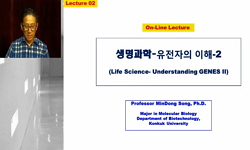The aim of the article is to outline the history of the mission of the minjung church from 1983 to 2005 and to identify its new missionary tasks in a changed world. At the end of the cold war, the minjung movement in general, the minjung mission in pa...
http://chineseinput.net/에서 pinyin(병음)방식으로 중국어를 변환할 수 있습니다.
변환된 중국어를 복사하여 사용하시면 됩니다.
- 中文 을 입력하시려면 zhongwen을 입력하시고 space를누르시면됩니다.
- 北京 을 입력하시려면 beijing을 입력하시고 space를 누르시면 됩니다.

민중교회의 선교역사(1983-2005)와 새로운 과제 = The History of the Mission of the Minjung Church from 1983 to 2005 and Its New Missionary Tasks
한글로보기https://www.riss.kr/link?id=A82435426
- 저자
- 발행기관
- 학술지명
- 권호사항
-
발행연도
2008
-
작성언어
-
-
주제어
민중 ; 민중교회 ; 민중선교 ; 영성 ; 생명 ; 사회전기 ; Minjung ; Minjung Church ; Minjung Mission ; Spirituality ; Life ; Social Biography
-
KDC
230
-
등재정보
KCI등재
-
자료형태
학술저널
-
수록면
1-23(23쪽)
- 제공처
-
0
상세조회 -
0
다운로드
부가정보
다국어 초록 (Multilingual Abstract)
political, cultural background and minjung mission’s main contents, characteristics, and limitation. The history of the mission of the minjung church is interpreted by the results of the social biographies of 26 minjung pastors. According to their social biographies, minjung pastors changed themselves in the process of the minjung mission rather than changed the minjung. They rediscovered the importance of the Bible and religion in relation to the social change. Also they found negative aspects of the minjung. They regarded spirituality and life as pillars for the forthcoming minjung mission. Some reflections on mission of the minjung church was carried out through analysing the relationship between faith and ideology, the dilemma of identity-involvement, positive understanding of religion, understanding of minjung, and theories of community organization and conscientization. In a changed world, spirituality,the minjung and life are identified as new tasks for the minjung mission.
The aim of the article is to outline the history of the mission of the minjung church from 1983 to 2005 and to identify its new missionary tasks in a changed world. At the end of the cold war, the minjung movement in general, the minjung mission in particular, seemed to be unnecessary any more. After the economic crisis of 1997, however, the minjung mission played an important role for taking care of victims of the structural adjustment programs of many corporations, and for establishing alternative communities. Its history divides into four periods: the formation period (1983-1987), the development period (1988-1992), the transformation period (1993-1997), and the professional period (1998-2005). Each period deals with its socio-economic,
political, cultural background and minjung mission’s main contents, characteristics, and limitation. The history of the mission of the minjung church is interpreted by the results of the social biographies of 26 minjung pastors. According to their social biographies, minjung pastors changed themselves in the process of the minjung mission rather than changed the minjung. They rediscovered the importance of the Bible and religion in relation to the social change. Also they found negative aspects of the minjung. They regarded spirituality and life as pillars for the forthcoming minjung mission. Some reflections on mission of the minjung church was carried out through analysing the relationship between faith and ideology, the dilemma of identity-involvement, positive understanding of religion, understanding of minjung, and theories of community organization and conscientization. In a changed world, spirituality,the minjung and life are identified as new tasks for the minjung mission.
목차 (Table of Contents)
- I. 민중교회의 선교역사(1983-2005)
- II. 민중교회 목회자의 사회전기
- III. 민중교회의 선교에 대한 반성
- IV. 민중선교의 과제
- I. 민중교회의 선교역사(1983-2005)
- II. 민중교회 목회자의 사회전기
- III. 민중교회의 선교에 대한 반성
- IV. 민중선교의 과제
동일학술지(권/호) 다른 논문
-
교회 웹사이트 분석을 통한 인터넷 선교방안에 관한 연구
- 한국기독교학회 선교신학회
- 이희영(Lee, Hee-yeong)
- 2008
- KCI등재
-
- 한국선교신학회
- 박경철(Park, Kyung-chul)
- 2008
- KCI등재
-
- 한국선교신학회
- 박영환(Park, Young-whan)
- 2008
- KCI등재
-
- 한국선교신학회
- 전석재(Jeon, Seok-jae)
- 2008
- KCI등재




 스콜라
스콜라






